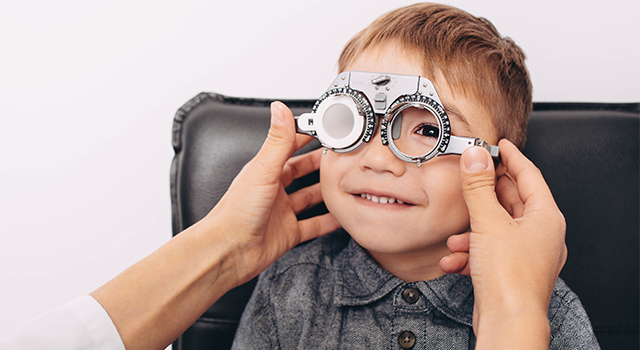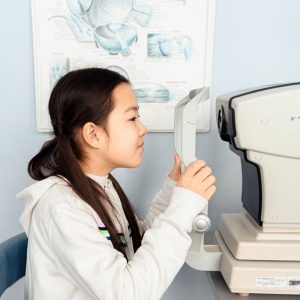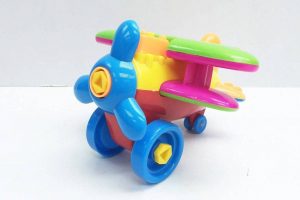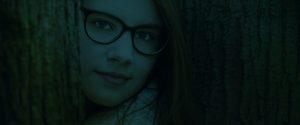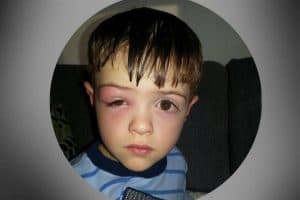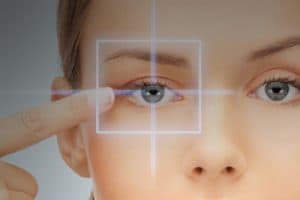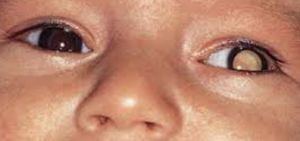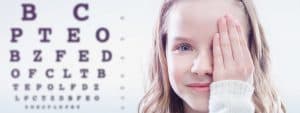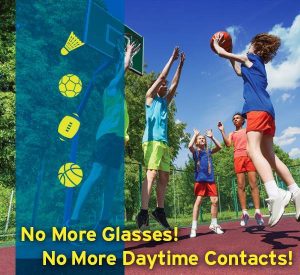Myopia not only impacts your vision, but also increases your chances of sight-threatening eye conditions.
Myopia, also called nearsightedness, is a vision condition that causes distant objects and images to appear blurry.
More than 4 in 10 people have myopia — and its prevalence is expected to rise quickly — impacting the lives of over 50 percent of the world’s population by 2050.
Myopia occurs when the eye grows too long, or the cornea is too curved, causing the light entering the eye to be focused in front of the retina, instead of directly on the retina. This results in a refractive error that affects distance vision clarity.
Myopia is typically diagnosed in childhood and often worsens over time, usually stabilizing by around age 20, when the eyes reach their adult size.
The most common signs and symptoms of myopia include:
- Blurry distance vision
- Squinting
- Sitting at close proximity to the TV or computer screen
- Holding books close to the eyes
The dangers of high myopia
Since myopia progression is common, unfortunately, the inconvenience of wearing corrective lenses is not your only concern.
Studies reveal that people with myopia are 2x more likely to develop glaucoma.
While lower levels of myopia, or an optical prescription below -3.0D, presents a risk to your child’s eye health, higher levels of myopia significantly increase your risk of developing sight-threatening eye diseases later on in life, such as glaucoma.
When comparing a person with an optical prescription greater than -6.0D to the general population, statistics show a much higher risk of eye disease among those with myopia:
- Glaucoma: 14x risk
- Retinal Detachment: 22x risk
- Macular Degeneration: 41x risk
What is glaucoma?
Glaucoma is the number one cause of blindness, worldwide. It has been dubbed the ‘silent thief of sight’ as it often sneaks up on those affected by it, robbing them of their sight, before presenting with any symptoms.
Glaucoma occurs when the optic nerve — responsible for carrying visual signals between the eye and brain — becomes permanently damaged, usually as a result of increased pressure inside the eye.
Untreated glaucoma results in ‘Tunnel Vision’, and eventually, total blindness.
As myopia worsens, the risk of glaucoma increases.
According to research, glaucoma affects 80 percent of people with optical prescriptions of over -6.0D.
SEE RELATED: 7 Common Pediatric Eye Conditions
Schedule a comprehensive eye exam with an eye doctor near you to learn how you can protect your child from myopia-related eye disease.
How can you protect your child’s vision?
Bringing your child for regular eye exams will enable your eye doctor to monitor their eye health and detect any changes in their vision.
It is important to impress upon your child that regular eye exams should become part of their healthcare routine as they grow and mature.
An annual eye exam should include assessments of their intraocular pressure, fundus (retina and optic nerve), pachymetry (corneal thickness) and visual field, which are essential for early detection of glaucoma.
Even if your child opts to have refractive surgery when they are older, their eyes will remain structurally myopic — making regular glaucoma examinations crucial, even if they no longer wear corrective eyewear.
What is myopia management?
Myopia management is an evidence-based program that has been proven to reduce myopia progression and lower the risk of myopia-related eye disease.
According to research, myopia management has been shown to decrease myopia progression by up to 78 percent.
A myopia management program may involve the use of multifocal glasses or contact lenses, orthokeratology (ortho-k lenses) or atropine eye drops — or a combination of these methods to help control myopia progression.
LEARN MORE: Guide to Pediatric Eye Conditions
If your child has myopia, contact an eye doctor near you to learn more about myopia management.

